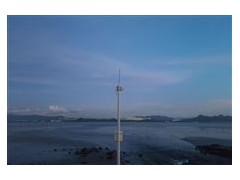based on the initial success of price increases in April, European corrugated box material manufacturers obviously hope to seize this opportunity again and hope to start a new round of negotiations on delivery prices from June. Sources on both sides of the Italian market report initial price increases for brown recycled corrugated box material and brown kraft paper delivered in April. In April, prices for white-faced imitation kraft cardboard and white-faced kraft cardboard remained unchanged or increased only slightly in many cases.
In Italy, manufacturers hope to further increase containerboard prices and are considering the possibility of price increases for a second shipment that may be delivered in May. Having said that, negotiations between buyers and suppliers for May deliveries are still incomplete and have been settled in the last days of April.
Both sides of the market are generally dissatisfied with the price adjustments for recycled corrugated box materials and kraft paper. As demand for corrugated board and packaging remains sluggish, converters don't understand why paper prices have to rise. Paper mills lamented low Italian containerboard prices and slow growth. The industry has raised the issue of the associated increased costs in justifying the need to increase containerboard prices. This is especially true for recycled corrugated box material, as scrap paper prices have been trending upward across Europe since February or March and are expected to rise again in May.
Sappi Europe said it will increase prices for its packaging and specialty products from June 2024. The announced increases will depend on the product category, specifically: flexible packaging paper 15%, release paper (CCK and Glassine) 15%, label paper 10%. The company explained that the price increase was necessary to maintain the viability of its business.
Heinzel subsidiary Bols Pulp AG has started up its new PM 6 at its Steyrmüller plant in Austria. The capacity expansion process is proceeding as planned. The machine will produce up to 150,000 tons/year of brown and white low-weight kraft paper. Heinzel acquired the Steyrmueller mill from UPM earlier this year and began converting PM 3 from publishing paper to low-grammage kraft paper. After the reconstruction was completed, the machine was renamed Paper Machine No. 6.
Chilean pulp manufacturer CMPC announces investment of US$4 billion in new pulp mill
Chilean pulp maker CMPC said it had signed an agreement with Brazil's southernmost state of Rio Grande do Sul to evaluate the construction of a new $4 billion pulp mill there. The new project, which will be located in the city of Ribeiro Barra, will initially have the capacity to produce up to 2.5 million tons of bleached hardwood kraft pulp (BHKP) per year, with capacity to be expanded later, CMPC said in a securities filing.
The project will undergo technical and environmental studies before being submitted to the CMPC board for a vote in mid-2026, the company said. CMPC also has paper and bio-packaging businesses, with pulp production totaling approximately 4 million tons in 2023. In Brazil, the company currently has the capacity to produce approximately 2.5 million tons of pulp through its mill in Guaíba, Rio Grande do Sul state, according to the company.
In addition to the investment required for the plant itself, the new project will require $420 million for roads and infrastructure near the potential plant, and $150 million to expand the port terminal and build another port terminal in Rio Grande City . Hernani Polo, Rio Grande do Sul's economic development secretary, said the company would then receive tax compensation for some of its infrastructure investments. CMPC did not disclose details of when the potential plant would begin operations.
Paper Excellence announces price increases for NBSK and SSBSK pulps, effective May 1
Paper Excellence Group (PE) informed North American customers that pulp prices in its bleached softwood kraft (BSK) market will increase from May 1. The Richmond, British Columbia-based paper group announced a price tag for northern bleached softwood kraft (NBSK) at $1,690/ton. PE did not specify the extent of the increase, but it was $80/ton higher than the last announced price.
For Southern Bleached Softwood Kraft (SBSK), PE announced a new price tag of US$1,620/ton, which is US$100/ton higher than the last announced price. PE Group, which in addition to its namesake company includes wholly-owned subsidiaries Domtar and Resolute Forest Products, was the only known paper-grade BSK producer to publish North American May prices as of last week.
Paper Excellence Group's market pulp production capacity in the United States and Canada is expected to be 3.276 million tons per year. These include NBSK, SBSK, fluff pulp, Southern Bleached Hardwood Kraft (SBHK), Bleached Chemothermal Mechanical Pulp (BCTMP) and Recycled Bleached Kraft (RBK). In addition to price increases for North American NBSK and SBSK, PE also announced an increase in fluff pulp prices by US$80/ton. PE’s latest mature market fluff pricing announced is US$1,920/ton. In the import and export market, PE is handling NBSK, SBSK and fluff prices on a case-by-case basis.
So far, North American bleached kraft paper producers Suzano, Eldorado and Klabin, as well as northern bleached hardwood kraft paper (NBHK) producer Alberta-Pacific Forest Industries (Al-Pac), have all raised prices. Hardwood producers separately announced price increases of US$80/ton, effective from May 1.
Mexico issued a decree to impose 15-35% tax on 21 types of paper and packaging imports
The Mexican government's decree, which took effect on April 23, updates and imposes, in certain circumstances, new import tariffs of 15%-35% on 21 packaging and paper products. According to the decree, the measure is valid for all countries and will be valid for two years, starting on April 23 and ending on April 23, 2026.
Rafael Barisokas, senior economist for Latin America at Fastmarkets, initially believed that the decision gave imports of U.S. products an advantage compared with other countries, especially China. “Products may become more attractive as the United States-Mexico-Canada Agreement (USMCA) requires greater regional integration and lower logistics costs compared to importing from China.”
The economist also pointed out that the United States has spare capacity, especially cardboard production capacity, that can meet the needs of the Mexican market. "That being said, the US's lost relevance is due to the cost of Chinese products, and even with higher shipping costs (due to the greater distance between China and Mexico vs. Mexico and the US), Chinese products are competitive enough to displace US products," Barry Sokas explained.
Barisokas said he believes the tariffs imposed by the Mexican government will "level the playing field" and make U.S. products competitive for Mexicans again. Some importers said they would take action to mitigate potential losses from the measures, while others are still evaluating possible actions to mitigate the impact of the decision.
China's market share of containerboard paper in Mexico will increase from 3.9% in 2020 to 17.2% in 2023. On the same comparison basis, the market share of U.S. products in the same segment fell from 62.2% in 2020 to 37% in January 2024. However, Rafael Barisokas emphasized that the economic correlation between Mexico and the United States in packaging is as high as 85%, with 80% of Mexico's exports going to the United States. “For every 5% change in U.S. GDP, there is a 4% change in Mexican GDP,” Looking ahead, the economist estimated that North American exporters are likely to raise prices in anticipation of increased demand.






